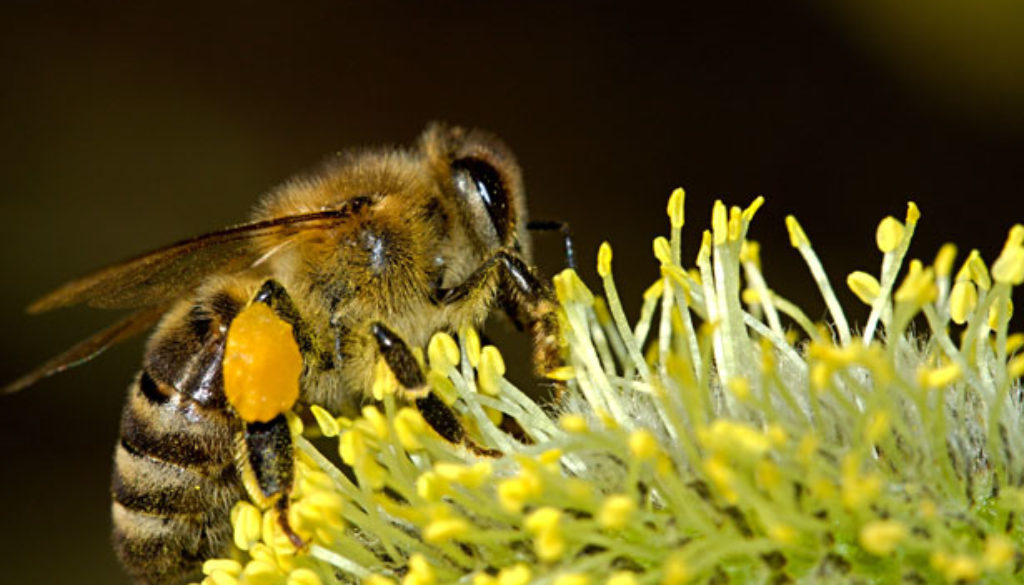Can a Proposed EPA Rule Save the Bees?
By Katie Vann, Center for Effective Government
For the past ten years, honeybees have been dying off at astonishing rates, drawing the attention of environmentalists and even the federal government. Bees are critical to a healthy environment because they transfer pollen and seeds between plants. This cross-pollination helps one-third of the plants our food system depends on to produce fruit and seeds.
A survey released this month by the Bee Informed Partnership highlights the urgency of this issue. The research looked at bee populations across the country over a 12-month period ending April 2015.
Forty-two percent of U.S. honeybee colonies died in just one year.
This is the second-highest annual loss since the partnership began tracking summer bee populations in 2010.
And here is what’s really raising eyebrows: the greatest loss came in the summer months, a time when bees should be thriving. In 2013, beekeepers lost 19.8 percent of their colonies in the summer. That figure jumped to 27.4 percent in 2014.

Researchers are looking at the pesticides farmers spray on crops as a probable cause of the die-offs. Many point to neonicotinoids, a class of insecticides that kills insects by paralyzing the central nervous system. Germany and other countries in the European Union have already taken action to ban or restrict the use of certain types of neonicotinoids, citing massive bee die-offs as the impetus.
Even low exposure to neonicotinoids can have indirect impacts on bee health, including interfering with bees’ ability to find their way back to the hive. A 2012 Harvard School of Public Health study stated there is “convincing evidence” of the link between a specific neonicotinoid and Colony Collapse Disorder where bees unexpectedly abandon their hives.
Last week, the U.S. Environmental Protection Agency took bold, decisive action to help bees.
A proposed federal rule released last Thursday would set limitations on the use of almost all insecticides during times when bees are pollinating certain crops.
Jim Jones, EPA’s assistant administrator for chemical safety and pollution prevention, described how it would work in a recent Associated Press article. He explained that when bees are pollinating almonds in the early spring, the ban on insecticides would apply to those trees. When bees are pollinating apple trees in April and May, the ban would then apply to those trees, and so on.
This action follows the establishment of a Pollinator Health Task Force that President Obama created last year to look at what is causing bee populations to decline.
Currently, all pesticides are supposed to be registered with EPA before entering the market – but there’s a gaping loophole.
EPA gathers data and scientific studies to determine whether to approve a pesticide. Under federal law the pesticide must not have “unreasonable, adverse effects on human health and the environment” when used according to instructions.
But there’s a loophole in this process, which helps explain how clothianidin, a neonicotinoid that is widely banned in Europe, was registered for use in the U.S. in 2003. The loophole allows the EPA to register pesticides with what’s called a “conditional registration.”
This loophole is meant to be used sparingly, in special instances that meet certain requirements. Clothianidin’s approval was conditioned on a promise from its manufacturer, Bayer CropScience, that the company would conduct a field study on the pesticide’s effects on bees by 2004. The study was submitted three years late, and it was deemed invalid by EPA because of its flaws. Even so, clothianidin still remains in use.
A 2013 Natural Resources Defense Council report asserts EPA has inappropriately used this loophole to approve 65 percent of the 16,000 pesticides they reviewed.
“The EPA has casually approved more than 10,000 pesticides for use in consumer products and in agriculture through this loophole. They’ve done so without transparency or public comment, and, in some cases, without toxicity tests to determine safety guidelines for public use,” wrote Jennifer Sass, NRDC senior health scientist and co-author of the report.
Given the growing concern over bee deaths, the EPA has agreed to review the health and environmental impacts of neonicotinoids. They expect the reviews to be complete by 2018.

